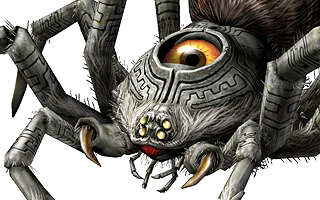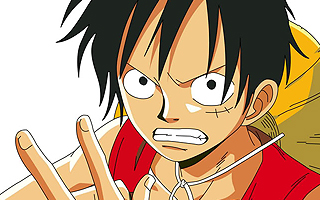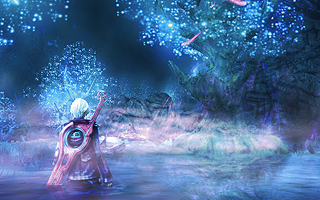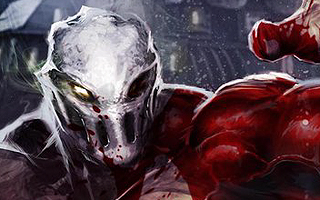The Dustbin of History
Top 10 Most Obscure Video Game Sequels of All Time!
Sequels have been thoroughly discussed on this website. In addition to standard sequels, we’ve also made lists for prequels, remakes, spinoffs, crossovers, spiritual successors, and rebranded games. We’ve also examined franchises that have successfully made the jump from 2D to 3D, and we’ve counted down the best and worst sequel innovations. We’ve even taken the time to look at games that are overdue for a sequel! We’re going to take yet another look at sequels, and it’s unlikely that there’ll be any overlap between this list and any of our previous countdowns. This time around, we’re looking for obscure or forgotten sequels that you (probably) didn’t even realize existed. These games were often released on platforms that nobody owned, and they had virtually no fanfare behind them.
Examples: Timecop 2, Christmas Vacation 2, Debbie Does Dallas… Again
10
Fade to Black
1995

Flashback: Quest for Identity is a cinematic platformer with an emphasis on environmental puzzles. Its rotoscoped animation and vibrant backgrounds received high praise in 1992, and the game was available on nearly every platform on the market. In 1995, Delphine Software released a 3D sequel that ditched the side-scrolling format and featured almost no platforming sequences. Fade to Black still had immersive cutscenes and some light puzzle elements, but the new over-the-shoulder perspective made the game feel radically different from its predecessor. Even though it suffered from many of the same problems that plagued early 3D games, it was well-received by critics and fans alike. The game sold well enough in PAL territories to be included as part of Sony’s “Platinum” lineup, and it received favorable reviews in many publications back in the day. Electronic Gaming Monthly even gave it “Game of the Month” honors. Time was not kind to the game, however, and most people forgot about it after they got their hands on more sophisticated titles like Tomb Raider. Flashback was ported to over a dozen platforms between 1992 and 1995, but the sequel was only officially released on DOS and the PS1. Fade to Black simply didn’t have as much staying power as Flashback did.
9
Final Fight Revenge
1999

Final Fight was one of the most influential arcade games ever, and it helped define the beat ’em up genre in the late 1980s. Capcom used the formula for many other games, and they even released two Final Fight sequels exclusively for the SNES. Final Fight Revenge was the only Final Fight follow-up that was released in arcades, but it was never distributed outside of Japan. A home version was later released for the Saturn, but that version was also confined to Japanese shores. Unlike its predecessors, Final Fight Revenge was a one-on-one fighting game that could be likened to Virtua Fighter. (In fact, the game ran on the same arcade board that powered Virtua Fighter Remix.) The game allowed players to pick up melee weapons and health-recovery items during fights, but the play mechanics were otherwise uninspired. The biggest problem with Final Fight Revenge was that it looked like a game from 1993. By the time it was released, the world had already gotten their hands on SoulCalibur and Dead or Alive 2, so a game that looked significantly worse than the first Tekken was unacceptable. One reviewer at Gamefan Magazine gave the game a rating of -100¥ to show their disapproval! Some of the games on this list could be considered hidden gems, but Final Fight Revenge is the type of game that should stay in obscurity.
8
Peter Pepper’s Ice Cream Factory
1984

BurgerTime was a huge hit for Data East in 1982. The game was ported to countless consoles and home computers, and anyone who grew up in the ’80s likely has fond memories of the game. Peter Pepper’s Ice Cream Factory followed the same formula as its predecessor, but it tasked players with assembling oversized ice cream cones instead of building giant hamburgers. Peter Pepper didn’t have a way to attack his enemies in this outing, but he could potentially evade them with his new jumping ability. Peter Pepper’s Ice Cream Factory was even more frenetic than BurgerTime, but nobody had the chance to play it. The arcade game was not widely released, and the first home port didn’t arrive until 2010 when it was included as part of the Data East Arcade Collection on the Wii. Unfortunately, Peter Pepper’s Ice Cream Factory was the first of several unsuccessful BurgerTime sequels. A console-only sequel called Diner was sent to die on the Intellivision in 1987, and an arcade sequel called Super BurgerTime failed to gain traction in 1990. The BurgerTime brand was white hot when Peter Pepper’s Ice Cream Factory was released in 1984, however, so it’s surprising that it didn’t reach a larger audience.
7
BS F-Zero Grand Prix & BS F-Zero Grand Prix 2
1997

In 1995, Nintendo released a satellite modem peripheral for the Super Famicom. The Satellaview allowed subscribers to download games and other content via satellite broadcasts. The service attracted over 100,000 users within its first two years, and more than 100 games were broadcast by the time the service ended in 2000. Many Satellaview games featured live commentary and could only be played during scheduled broadcast times. Sadly, most of the Satellaview content was lost forever when the service was closed. BS F-ZERO Grand Prix and its sequel could be played through emulation long after the Satellaview was cancelled, but the live commentary tracks were obviously missing in action. For what it’s worth, BS F-ZERO Grand Prix felt more like a “special edition” of F-ZERO than a proper sequel. It featured four new vehicles and four new tracks, but most of the courses were lifted directly out of the original game. It did feature remixed music and commentary from Japanese media personalities, however. BS F-ZERO Grand Prix 2 had new commentary and a couple of never-before-seen tracks, but it wasn’t much of a sequel either. A physical version of BS F-ZERO Grand Prix was apparently considered for release, but it never saw the light of day.
6
The Legend of Zelda: Ancient Stone Tablets
1997

It’s hard to believe that a Zelda game could fly under the radar, but two new Zelda games were released exclusively in Japan for the Satellaview system. BS The Legend of Zelda was stylistically similar to the first Zelda game on the NES, and some publications described it as a remake. BS The Legend of Zelda: Ancient Stone Tablets was more in line with A Link to the Past, and its overworld was nearly identical. Although it wasn’t a “proper” sequel, Ancient Stone Tablets introduced new dungeons, new characters, and new concepts like rental shops. More significantly, the BS Zelda games featured streaming commentary and were broken down into episodic installments. (The episodes each restricted the playing area and imposed a one-hour time limit to ensure that the action on the screen would fit with the live voice acting.) This episodic format made it extremely difficult to preserve the games, and the concept of a live broadcast simply doesn’t translate well to the emulation model. Zelda is one of gaming’s biggest franchises, but most Zelda fans don’t know that Ancient Stone Tablets exists.
5
Excitebike: Bun Bun Mario Battle Stadium
1997

Excitebike: Bun Bun Mario Battle Stadium is another Satellaview release that got no attention outside of Japan. The game was basically an adaptation of the original Excitebike, but it was a lot more colorful than its NES counterpart. Instead of nameless racers, the game featured characters from the Mario universe. The game was broadcast in four installments, and each episode added new characters. Mario, Luigi, and Toad were available from the beginning, and they were later joined by Wario, Peach, and Yoshi. The play mechanics were largely unchanged from the NES original, but there were a few notable additions. For instance, players could increase their top speed by collecting coins that were scattered throughout the courses. There was also a new “Super” mode that gave players unlimited turbo boosts. The bonus stages were also given a new coat of paint, and players were tasked with jumping over Boos instead of cargo trucks. Excitebike obviously isn’t as popular as Zelda, so Excitebike: Bun Bun Mario Battle Stadium isn’t talked about as much as the BS Zelda games are. That’s the sole reason why it’s ranked higher on this list, but every Satellaview release was slept on.
4
SimCity 64
2000

The 64DD was a Nintendo 64 add-on that was released exclusively in Japan in 1999. The device used proprietary magnetic disks and promoted the benefits of re-writable data storage, but the peripheral failed to gain any traction. Only nine 64DD games were released before it was discontinued, and every one of them could be considered obscure. SimCity 64 was a direct follow-up to the SNES version of SimCity from 1991. SimCity 2000 and SimCity 3000 had already been launched on various platforms, but SimCity 64 was built from the ground up with Nintendo’s console in mind. It featured elements that had been exclusive to the SNES game – including Dr. Wright – and it also introduced new mechanics to the series. Not only could you view the city at night, but you could also roam your city as a pedestrian from a first-person view. You could even navigate through the city via train, bus, or helicopter! (Incidentally, the helicopter interface had been lifted from a cancelled game called SimCopter 64.) In many regards, SimCity 64 was more innovative that the other SimCity sequels. Unfortunately, the framerate was horrible and the game was downright ugly. It was probably a little too ambitious for its own good, but I still feel it deserved more attention than it received.
3
Warrior Blade: Rastan Saga Episode III
1991

Released in 1987, Rastan was a side-scrolling arcade game starring a barbarian who sliced up hordes of mythical creatures en route to slaying a dragon. The game was known for its highly-detailed backgrounds and sprites, but none of the home ports could hold a candle to the arcade original. The 1990 sequel was laughably bad, so nobody cared about the home ports of Rastan Saga II. Most fans had written the series off by that point, but Taito redeemed themselves with the release of Warrior Blade: Rastan Saga Episode III in 1991. The game had evolved into a weapons-based brawler similar to Golden Axe, and it supported two-player co-op. Warrior Blade gave players three characters to choose from (including a whip-wielding babe), and the level designs were surprisingly varied. Whether you were racing through the woods on the back of a horse or battling a kraken on a pirate ship, there was always something interesting to see. The backgrounds had a ton of detail, the animation was silky smooth, and the boss battles were epic. Taito clearly put their all behind the game, and Warrior Blade almost felt like an apology for Rastan Saga II. Unfortunately, most people never had the opportunity to play it. The arcade cabinet used two monitors, and the double-wide format made it prohibitively expensive. There were no home ports of the game either, and it would have been impossible to confine the action to a single screen. The game should be regarded as a classic, but nobody ever talks about it.
2
Athena: Full Throttle
2006

Released in 1986 by SNK, Athena gave us one of gaming’s first strong female leads. After opening the “Door that Shouldn’t Be Opened,” Princess Athena was transported to a deadly place and deprived of her clothing. Fortunately, the scantily-clad princess could obtain new armor by kicking the shit out of monsters. A modern-day iteration of the character (known as Athena Asamiya) was introduced in Psycho Soldier the following year, and the game dropped the Greek mythology elements in favor of a contemporary setting. Athena Asamiya became something of a mascot for SNK and was given a prominent role in The King of Fighters, but the original Athena faded into the background and only made brief cameo appearances. In 2006, SNK Playmore released Athena: Full Throttle out of the blue. Full Throttle was a direct sequel to the original 1986 arcade game, and it had a fantastic sense of humor. (This time around, Athena’s adventure began when she opened up the “Door that Shouldn’t Be Opened: B.”) The play mechanics in Full Throttle borrowed heavily from the first game, but players now had two sexy characters to choose from! The sequel was 20 years in the making, but most people never played it since it was released exclusively for Japanese mobile devices. At least we got some nice artwork out of it.
1
Space Fever II
1998

Space Invaders is the single most important arcade game of all time. It revolutionized the entire industry and it literally changed the world. In the wake of the game’s unprecedented success, the market was flooded with unofficial clones and uninspired knockoffs. Some games (like Namco’s Galaxian) tried to build off the Space Invaders formula, but Nintendo’s Space Fever was as derivative as they come. The basic premise involved shooting down waves of alien fighters that steadily descend from above. Like in Space Invaders, players could seek refuge behind destructible barricades or earn extra points by destroying a UFO that would periodically fly across the top of the screen. The game had three different game modes that affected the direction of the alien ships, but it still came across as a poor man’s imitation of Space Invaders. Nintendo is one of gaming’s biggest innovators, so Space Fever obviously wasn’t their proudest moment. After the game launched in 1979, it was quickly forgotten and Nintendo never mentioned it again until they stealth dropped a sequel on the most obscure platform imaginable. Space Fever II was a secret minigame included on the Game Boy Camera peripheral in 1998. The game used many of the same mechanics as its predecessor, but each of its three stages was capped off by an epic boss fight against a floating digitized face. (In a surprise twist, the final boss ends up being a picture of your own face!) I don’t think anyone in 1979 would have predicted that a Space Fever sequel would eventually be released on a black-and-white digital camera.





Do you agree with this list? Let us know what you think by leaving a comment below. Your opinion matters!